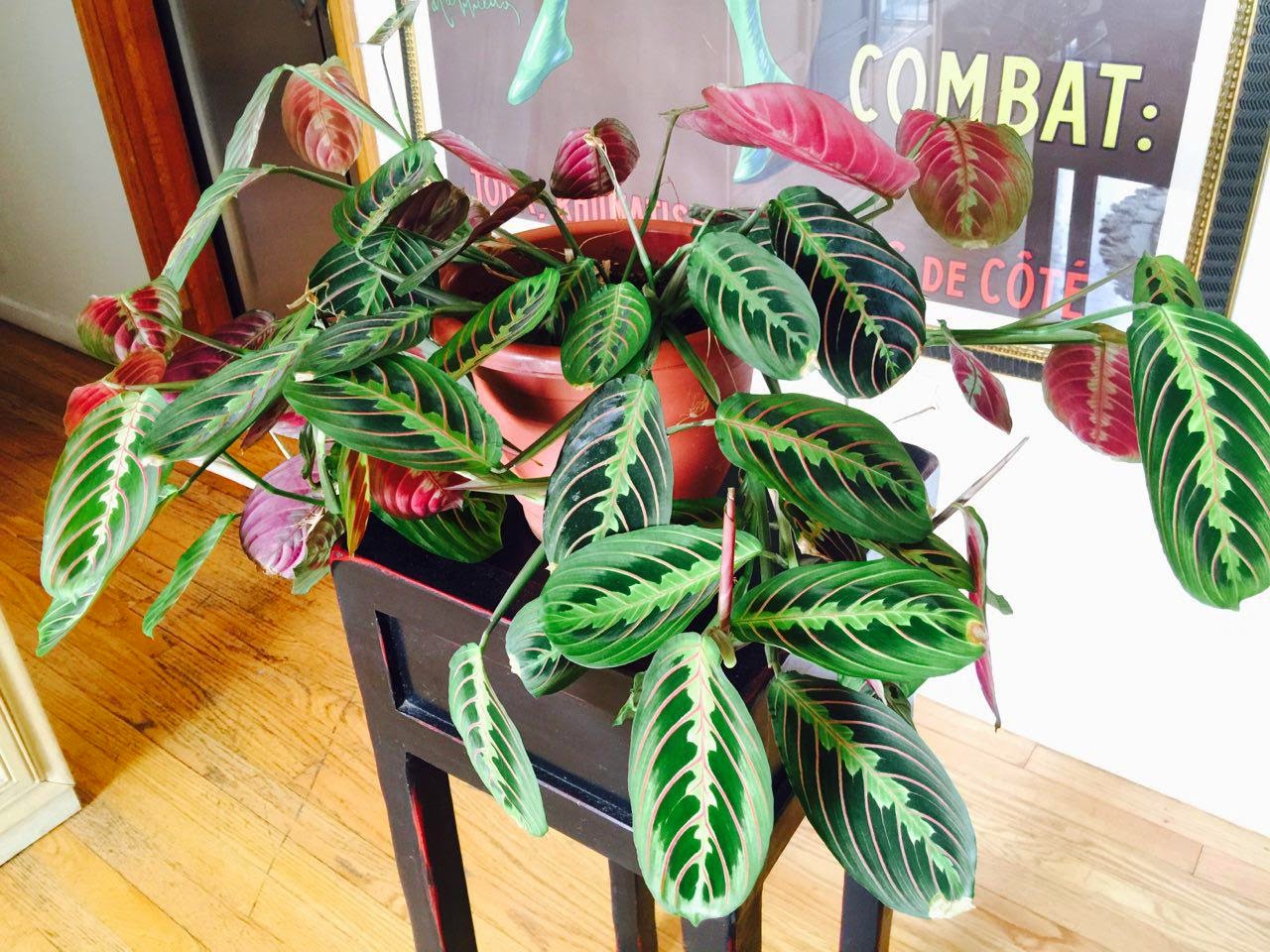PRAYER PLANT
Maranta leuconeuraThis is a prayer plant grows about 1 ft. high and wide. Leaves tend to be flat during the day, and folded at night (thus "prayer plant"). It grows best in bright, indirect lights and should be watered when the soil surface feels dry to the touch.
How to Grow a Prayer Plant
Although prayer plant houseplant is somewhat tolerant of low light conditions, it does best in bright, indirect sunlight. The prayer plant prefers well-drained soil and requires high humidity to thrive. Prayer plant houseplants should be kept moist, but not soggy. Use warm water and feed prayer plant houseplants every two weeks, from spring through fall, with an all-purpose fertilizer.
During winter dormancy, the soil should be kept drier. Keep in mind, however, that dry air can also be a problem in winter; therefore, placing the prayer plant among several houseplants can help create more humid conditions, misting daily with warm water. Placing a bowl of water near the plant or setting its container on top of a shallow dish of pebbles and water is also helpful. However, do not allow the prayer plant to sit directly in water. Ideal temperatures for the prayer plant are between 60 and 80 F. (16-27 C.).
Prayer Plant Pest Problems
Since prayer plant houseplants may be prone to pests such as spider mites, mealybugs and aphids, it is a good idea to inspect new plants thoroughly before bringing them indoors. You may also want to occasionally check prayer plant houseplants as an added precaution during watering or feeding intervals for any problems that may arise.





No hay comentarios:
Publicar un comentario